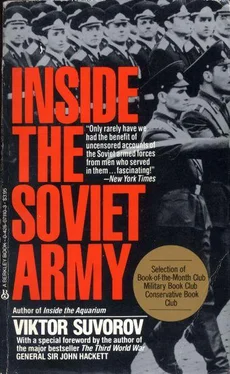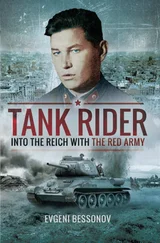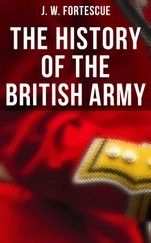I do not know whether the author lived until 1940, to see the German tanks sweeping along the Paris boulevards, past the spot at which, many decades later, I was to buy my dusty copy of his book, its leaves yellowing with age. The belief that the tank is reaching the end of its life is itself surprisingly long-lived. At the beginning of the 1960s, France decided to stop production of tanks, because their era was over. It is fortunate that this delusion was shattered by the Israelis' old `Sherman' tanks in the Sinai peninsula. Israel's brilliant victory showed the whole world, once again, that no anti-tank weapon is able to stop tanks in a war, provided, of course, that they are used skilfully.
The argument used by the tank's detractors is simple-`Just look at the anti-tank rockets-at their accuracy and at their armour-piercing capability! But this argument does not hold water. The anti-tank rocket is a defensive weapon-part of a passive system. The tank, on the other hand, is an offensive weapon. Any defensive system involves the dispersal of forces over a wide territory, leaving them strong in some places and weak in others. And it is where they are weak that the tanks will appear, in enormous concentrations. Even if it were possible to distribute resources equally, this would mean that no one sector would have enough. Try deploying just ten anti-tank rockets along every kilometre of the front. The tanks will then choose one particular spot and will attack it in their hundreds, or perhaps thousands, simultaneously. If you concentrate your anti-tank resources, the tanks will simply by-pass them. They are an offensive weapon and they have the initiative in battle, being able to choose when and where to attack and how strong a force to use.
The hope that the perfection of anti-tank weapons would lead to the death of the tank has been shown to be completely unfounded. It is like hoping that the electronic defences of banks will become so perfect in the future that bank robbers will die out as a breed. I assure you that bank robbers will not become extinct. They will improve their tools, their tactics, their information about their targets and their methods of misleading their enemies and they will continue to carry out raids. Sometimes these will fail, sometimes they will succeed, but they will continue so long as banks continue to exist. The robbers have the same advantage as tanks-they are on the offensive. They decide where, when and how to attack and will do so only when they are confident of success, when they have secretly discovered a weak spot in the enemy's defences, whose existence is unknown even to the enemy himself.
2
Soviet generals have never been faced with problems of this sort. They have always known that victory in a war can only be achieved by advancing. To them defensive operations spell defeat and death. In the best case, such operations can only produce a deadlock, and not for long, at that. Victory can only be achieved by means of an offensive-by seizing the initiative and raining blows on the enemy's most vulnerable areas.
Thus, to win, you must attack, you must move forward unexpectedly and with determination, you must advance. For this you need a vehicle which can travel anywhere to destroy the enemy, preferably remaining unscathed itself. The one vehicle which combines movement, fire-power and armour is the tank. Perhaps, in the future, its armour will be perfected, perhaps it will not have tracks but will travel in some other way (there have been wheeled tanks), perhaps it will not have a gun but be armed with something else (there have been tanks armed solely with rockets), perhaps all sorts of things will be changed, but its most important characteristics-its ability to move, to shoot and to defend itself-will remain. As long as there are wars, as long as the desire for victory lasts, the tank will exist. Nuclear war has not only not written it off, but has given it a new lease of life-nothing is so suited to nuclear war as a tank. To survive a nuclear war you must put your money on these steel boxes.
1
Drive a tank on to an airfield and park it near a military aircraft. Next put a helicopter between the tank and the aircraft. Now, look at each of them and then answer the question-which does the helicopter resemble more-the tank or the aircraft?
I know what your opinion will be. You don't need to tell me. But the Soviet generals believe that to all intents and purposes the helicopter is a tank. In fact they find it difficult to distinguish between the two. Certainly there is very little in common between the helicopter and the aircraft. Small details, like the ability to fly, but nothing more.
Of course, they are right. The helicopter is related to the tank, not to the aircraft. The reasoning behind this is simple enough-in battle a tank can seize enemy territory and a helicopter can do the same. But an aircraft cannot. An aircraft can destroy everything on the surface and deep below it, but it can not seize and hold territory.
For this reason, the Soviet Army sees the helicopter as a tank-one which is capable of high speeds and unrestricted cross-country performance, but is only lightly armoured. It also has approximately the same fire-power as a tank.
The tactics employed in the use of helicopters and tanks are strikingly similar. An aircraft is vulnerable because in most cases it can only operate from an airfield. Both the helicopter and the tank operate in open ground. An aircraft is vulnerable because it flies above the enemy. A helicopter and a tank both see the enemy in front of them. To attack, a helicopter does not need to fly over the enemy or to get close to him.
The introduction of the helicopter was not greeted with any particular enthusiasm by the Air Forces, but the Land Forces were jubilant-here was a tank with a rotor instead of tracks, which need not fear minefields or rivers or mountains.
It is therefore not surprising that the airborne assault brigades (which are carried by helicopter) form part of the complement of Tank Armies or of Fronts, which use them for joint operations with Tank Armies.
At the present moment the Soviet MI-24 is the best combat helicopter in the world. This is not just my personal opinion, but one which is shared by Western military experts. Knowing the affection which Soviet Marshals have for their helicopters, I prophesy that even better variants of these flying tanks will appear in the next few years. Or are they, perhaps, already flying above Saratov or somewhere, even though we have not been shown them yet?
The Most Important Weapon
1
Before the Second World War each army had its own approach to questions of defence. Drawing on their experience of the First World War, the French considered that their main problem was to survive artillery bombardments, which might continue for several days or even several months. The German generals decided that they must make their forces capable of repelling attacks by all enemy arms of service. The Soviet generals concluded that they must avoid diluting their resources and that they must concentrate on the most important of the arms of service. Since for them this was the tank, they saw defence purely as defence against tanks. Their defence system could therefore only be considered complete when their forces were asked to repulse tank attacks. If we can only stop the enemy's tanks, the generals reasoned, everything else will be halted, too.
They were right, as many German generals, the first of whom was Guderian, have acknowledged. Many of the battles which took place on Soviet territory followed a standard scenario. The German forces would launch a very powerful tank attack, which, from the second half of 1942 onwards the Soviet troops always succeeded in halting. This was the course of events at Stalingrad, at Kursk and in Hungary, in the Balaton operations. From 1943 onwards, having exhausted their capacity for launching such attacks, the German forces were ordered by Hitler to adopt a strategy of defence in depth. But this was not the way to oppose tanks. This strategy did not enable the German army to halt a single breakthrough by Soviet tanks.
Читать дальше












